Table of contents
- Why Consider Pig Farming in India?
- Getting Started: The Initial Steps
- Choosing the Right Pig Breeds
- Building the Ideal Pig Housing (Sty)
- Pig Feed Management: Nutrition is Key
- Health Management and Disease Prevention (Biosecurity Focus)
- Marketing and Selling Your Pigs
- Financial Aspects: Costs and Profitability
- Government Schemes and Support for Pig Farming in India
- Conclusion
- Frequently Asked Questions (FAQs)
Pig farming, also known as piggery, is emerging as a significant and potentially profitable agricultural venture in India. With a growing demand for pork, especially in certain regions, and the inherent advantages of pig rearing, it presents a viable livelihood option for many. However, like any business, successful pig farming requires careful planning, knowledge, and consistent effort.
This comprehensive guide will walk you through the essential steps and considerations for starting your own pig farming business in India in 2025. We’ll cover everything from initial planning and breed selection to housing, feeding, crucial health management, marketing, and accessing government support.
Why Consider Pig Farming in India?
Before diving into the ‘how-to’, let’s understand ‘why’ pig farming can be a good choice:
- Growing Demand: Pork is one of the most consumed meats globally. While its consumption in India is lower compared to poultry or mutton, there’s a significant and growing demand, particularly in the northeastern states (which consume nearly 70% of domestic production and still rely on imports from other states) and urban centers. Recent trends show a need to increase domestic production to meet this demand.
- Fast Growth Rate: Pigs grow relatively quickly compared to other livestock. They can reach a marketable weight of 80-100 kg within 6-8 months.
- High Feed Conversion Ratio (FCR): Pigs are efficient converters of feed into meat. A good FCR (around 3:1, meaning 3 kg of feed results in 1 kg of weight gain) makes the operation potentially more economical, though this depends heavily on feed quality and management.
- Prolific Breeders: Sows (female pigs) can farrow (give birth) twice a year, producing litters of 8-12 piglets each time. This allows for rapid multiplication of stock.
- High Dressing Percentage: Pigs yield a high percentage of meat from their live body weight (around 60-80%), maximizing the output.
- Flexible Diet: Pigs can consume a wide range of feedstuffs, including grains, agricultural by-products, certain forage crops, and even properly treated kitchen/hotel waste (more on safety later).
- Manure Production: Pig manure is a valuable organic fertilizer for crops.
- Profit Potential: With efficient management, good breeds, and market access, pig farming can offer attractive returns. Studies and reports suggest potential profit margins, though these vary significantly based on input costs (especially feed) and market prices.
- Livelihood Support: It provides employment and income opportunities, particularly for small and marginal farmers.
Getting Started: The Initial Steps
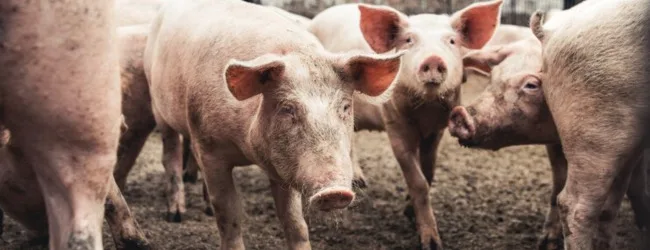
Setting up a successful pig farming venture requires a systematic approach.
1. Market Research and Business Plan
Understand Demand: Research the local demand for pork and piglets. Identify potential buyers like local butchers, meat shops, hotels, restaurants, pork processing units, or direct consumers. Is there a specific breed preference?
Create a Business Plan: This is your roadmap. It should detail:
- Your objectives (e.g., selling fatteners, breeding piglets).
- Scale of operation (number of pigs).
- Initial investment (land, housing, stock, equipment).
- Recurring costs (feed, labour, veterinary care, utilities).
- Projected revenue and profitability analysis.
- Marketing strategy.
- Risk assessment (disease outbreaks, price fluctuations).
- Highlight: A solid business plan is essential not just for guiding your operations but also for securing bank loans or subsidies.
2. Legal Requirements and Licenses
- Business Registration: Register your farm as a legal entity (sole proprietorship, partnership, company).
- Local Permissions: Obtain a No Objection Certificate (NOC) from the local Gram Panchayat or Municipal body.
- Pollution Control Board NOC: Depending on the scale and location, an NOC from the State Pollution Control Board might be required due to waste management concerns.
- Other Permits: Check for any state-specific licenses related to livestock farming, water usage, or waste disposal.
3. Location Selection
- Land Availability: Ensure you have sufficient land for housing, waste management, and potentially fodder cultivation. (A sample project report suggested one acre for a larger unit).
- Water Source: A reliable source of clean water is crucial for drinking and cleaning.
- Accessibility: The site should be accessible by road for transporting feed, animals, and products.
- Distance from Residences: Locate the farm away from residential areas to avoid odour and potential zoonotic disease concerns.
- Biosecurity: Choose a location that minimizes the risk of disease transmission from neighbouring farms or wild animals. Avoid pig-dense areas if possible.
💡 Pro Tip: If you want to start animal husbandry but have too many doubts, connect with an animal husbandry expert from Boss Wallah for guidance – https://bw1.in/1116
4. Arranging Finance
- Self-Funding: Utilize personal savings if available.
- Bank Loans: Approach commercial banks, Regional Rural Banks (RRBs), or Cooperative Banks. A detailed business plan is vital. NABARD (National Bank for Agriculture and Rural Development) provides refinance facilities to banks for agricultural projects, including piggery.
- Government Schemes: Explore subsidies available under central and state government schemes (discussed later).
Choosing the Right Pig Breeds
Selecting the right breed is critical for productivity and profitability. Consider factors like local climate suitability, growth rate, meat quality preference, disease resistance, and mothering ability.
Popular Exotic Breeds in India:
- Large White Yorkshire: Most popular exotic breed. Known for large size, white colour, erect ears, good growth rate, excellent meat quality, and prolificacy. Widely used in crossbreeding. Mature boars weigh 300-400 kg, sows 230-320 kg.
- Landrace: Large, white pigs with characteristic large, drooping ears. Known for long bodies, good mothering ability, prolificacy, and efficient feed utilization. Mature boars weigh 270-360 kg, sows 200-320 kg.
- Duroc: Reddish-brown pigs known for rapid growth, good feed efficiency, and high meat yield (good dressing percentage). Mature boars weigh 250-340 kg, sows 180-270 kg.
Promising Indigenous & Crossbred Pigs:
- Ghungroo: An indigenous breed from North Bengal, popular for high prolificacy (8-18 piglets), good mothering ability, docile nature, and ability to thrive on low-input systems. Mostly black with a ‘bulldog’ face.
- Niang Megha: Indigenous breed from Meghalaya.
- Desi Pigs: Various local breeds adapted to specific regions. Generally hardier and more disease-resistant than exotics but have slower growth rates.
- Crossbreds: Crosses between exotic and indigenous breeds (like Rani, Asha developed by research institutes) often combine the hardiness of local breeds with the faster growth of exotics. Recommended for many Indian conditions.
Sourcing Quality Stock: Purchase piglets or breeding stock only from reputable sources like government livestock farms, university farms, or certified private breeders to ensure good health and genetic potential.
Building the Ideal Pig Housing (Sty)
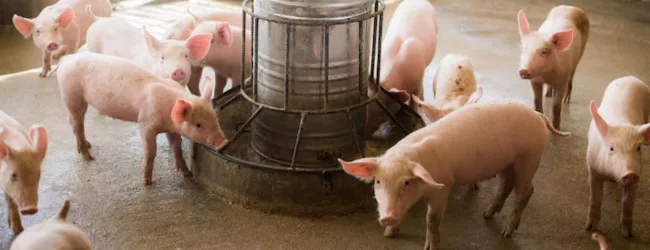
Proper housing protects pigs from harsh weather (sun, rain, cold), prevents theft, controls diseases, and facilitates efficient management.
- Types of Systems:
- Intensive: Pigs are confined entirely within buildings. Common for commercial pig farming. Allows better control over environment and biosecurity.
- Semi-Intensive: Pigs have access to both indoor shelter and outdoor paddocks/runs.
- Backyard/Free-Range: Common in rural, low-input systems. Requires minimal housing but makes disease control harder.
- Essential Features:
- Adequate Space: Avoid overcrowding. Recommended space per pig (source: FarmAtma/DAHD):
- Boar: 55-80 sq. ft.
- Farrowing Sow (mother + piglets): 75-95 sq. ft.
- Dry Sow/Gilt: 20-30 sq. ft.
- Weaner/Fattener: 10-20 sq. ft.
- Ventilation: Good airflow is crucial to remove moisture, heat, and harmful gases (like ammonia), preventing respiratory diseases.
- Protection: Solid roof and walls to protect from rain, direct sun, and cold winds.
- Flooring: Should be durable, non-slippery, easy to clean, and sloped towards drains. Concrete is common.
- Drainage: Proper drainage system to remove urine and wastewater effectively.
- Separate Pens: Different pens for boars, pregnant sows, farrowing sows with piglets, weaners, and growers/finishers. Sick animals should have an isolation pen.
- Feeders & Waterers: Sufficient trough space and access to clean water. Design should prevent wastage and contamination.
- Bedding: Provide clean, dry bedding material (like paddy straw) for comfort, especially for piglets and farrowing sows.
- Farrowing Pens: Special pens for sows giving birth, with protective rails (creep area) to prevent the sow from crushing piglets. Note: Government guidelines discourage restrictive gestation or farrowing crates.
- Highlight: A well-designed, clean, and comfortable house is fundamental for healthy and productive pig farming.
- Adequate Space: Avoid overcrowding. Recommended space per pig (source: FarmAtma/DAHD):
Pig Feed Management: Nutrition is Key
Feed constitutes the largest portion of recurring costs in pig farming (often 60-80% or more). Efficient feed management is therefore vital for profitability.
- Balanced Diet: Pigs need a balanced diet containing adequate energy, protein, essential amino acids, vitamins, and minerals. Requirements vary significantly based on age and physiological stage (piglet, grower, finisher, pregnant sow, lactating sow, boar).
- Types of Feed:
- Concentrate Feed: Commercially manufactured feeds formulated for specific stages. Convenient but can be expensive.
- Farm-Grown Feeds: Grains (maize, sorghum, broken rice, wheat bran), oil cakes (groundnut cake, soybean meal), pulses, root crops (tapioca). Composition needs careful balancing.
- Feed Supplements: Vitamin and mineral mixes are often required to supplement farm-grown rations.
- Kitchen/Hotel Waste (Swill Feeding): Can reduce feed costs but poses a MAJOR BIOSECURITY RISK, especially for diseases like African Swine Fever (ASF).
- Highlight: If using swill feed, it MUST be properly treated (boiled thoroughly at 100°C for at least 30 minutes) to kill harmful viruses and bacteria. Feeding untreated swill is often illegal during disease outbreaks and extremely dangerous for your pigs. Consult local regulations and veterinary advice before using swill.
- Forages/Greens: Some green fodder can supplement the diet, especially for sows.
- Feeding Schedule & Quantity: Feed pigs 2-3 times daily. Adjust quantity based on age, weight, and condition. Example daily amounts (may vary):
- Grower/Fattener (45-100 kg): 2.0-3.0 kg
- Lactating Sow: Around 5.0 kg (needs extra nutrition for milk production)
- Clean Drinking Water: Provide constant access to fresh, clean drinking water. An adult pig may drink 10-15 liters or more per day, especially in hot weather.
Health Management and Disease Prevention (Biosecurity Focus)
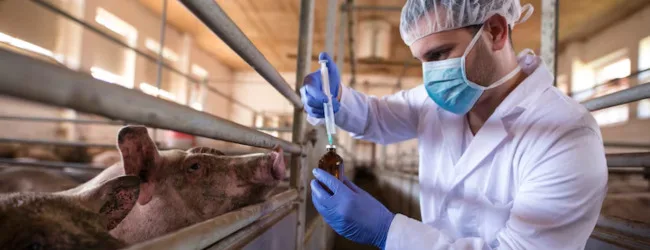
Disease outbreaks can wipe out profits and even entire herds. Prevention through robust health management and strict biosecurity is paramount.
Common Pig Diseases in India:
- African Swine Fever (ASF): The biggest threat. Highly contagious viral disease affecting only pigs (not humans). Causes high fever, lethargy, skin discolouration, bloody discharge, and often sudden death. Mortality rates can reach 90-100%. There is NO vaccine and NO cure. First reported in India in 2020, primarily impacting North-East states with devastating economic losses (estimated Rs 80 crore loss in NE India from 2020-24). Prevention relies entirely on strict biosecurity.
- Classical Swine Fever (CSF): Another serious viral disease, symptoms can overlap with ASF. Vaccines are available and often provided free under government schemes (LHDCP).
- Foot and Mouth Disease (FMD): Viral disease affecting cloven-hoofed animals. Causes blisters, lameness. Vaccination is key.
- Porcine Reproductive and Respiratory Syndrome (PRRS): Causes reproductive failure and respiratory issues.
- Erysipelas: Bacterial infection causing skin lesions, arthritis. Vaccinate regularly.
- Parasitic Infections: Internal (worms) and external (lice, mange) parasites are common. Regular deworming and sanitation are necessary.
Biosecurity: Your Farm’s Shield Against Disease
Biosecurity refers to measures taken to prevent the entry and spread of diseases onto your farm. It is non-negotiable for successful pig farming, especially with the ongoing threat of ASF. Key elements include:
1. Segregation:
- Perimeter Control: Securely fence the entire farm area to prevent entry of stray animals (including dogs, wild pigs) and unauthorized people. Lock gates.
- Controlled Access: Have a single, controlled entry/exit point.
- Quarantine: Isolate all newly purchased pigs for at least 30-45 days in a separate area before introducing them to the main herd. Observe them closely for any signs of illness and test if necessary. Source animals from reliable, disease-free farms.
- Separate Units: Maintain separate housing and equipment for different age groups and sick animals.
- All-In/All-Out: Ideally, move pigs in batches. Empty, clean, and disinfect a pen/building completely before introducing a new batch.
2. Cleaning:
- Remove Organic Matter: Thoroughly remove all manure, bedding, feed spills, and visible dirt from pens, equipment, vehicles, and boots before disinfection. Pathogens hide in dirt.
- Daily Cleaning: Remove manure daily from pens (unless using slatted floors).
- Pressure Washing: Use high-pressure washers for cleaning buildings and vehicles where possible.
3. Disinfection:
- Effective Disinfectants: Use government-approved disinfectants effective against specific pig pathogens (e.g., formulations based on sodium hypochlorite, potassium permanganate, iodine compounds, glutaraldehyde). Follow manufacturer’s instructions for concentration and contact time.
- Footbaths: Maintain functional footbaths with fresh disinfectant solution at the farm entrance and entry to each shed. Ensure boots are cleaned before dipping.
- Vehicle Disinfection: Disinfect the tyres and undercarriage of all vehicles entering the farm premises. Limit vehicle entry as much as possible.
- Equipment Disinfection: Regularly clean and disinfect feeders, waterers, tools, and other equipment.
4. People Management:
- Limit Visitors: Restrict entry to essential personnel only. Keep a visitor log.
- Farm-Specific Clothing/Footwear: Provide dedicated boots and overalls for farm workers and visitors to wear only within the farm premises. Require hand washing upon entry/exit.
- Worker Hygiene: Train workers on biosecurity protocols. They should not visit other pig farms or handle pigs outside the farm. They shouldn’t bring outside food (especially pork products) into pig areas.
- Separate Staff: If possible, assign separate workers for handling sick animals versus healthy animals.
5. Other Critical Measures:
- Feed Safety: Never feed untreated kitchen/hotel waste (swill). Store feed securely to prevent contamination by rodents or birds.
- Water Source: Protect water sources from contamination.
- Pest Control: Implement effective rodent, fly, and bird control programs.
- Carcass Disposal: During outbreaks, dispose of dead pigs safely and immediately as per veterinary guidelines (deep burial or incineration on-site) to prevent disease spread. Do not sell sick or dead pigs.
- Movement Control: Avoid unnecessary movement of pigs. During outbreaks, strictly adhere to government-imposed movement restrictions.
Vaccination and Deworming
- Vaccination: Consult a veterinarian to develop a vaccination schedule appropriate for your area. Essential vaccines include CSF and FMD.
- Deworming: Implement a regular deworming program. Start piglets at 6-8 weeks, repeat every 45-60 days for growers, and every 2-3 months for adults. Deworm sows about two weeks before farrowing.
Highlight: Partnering with a local veterinarian is crucial for disease diagnosis, treatment advice, vaccination schedules, and developing a farm-specific biosecurity plan.
Marketing and Selling Your Pigs
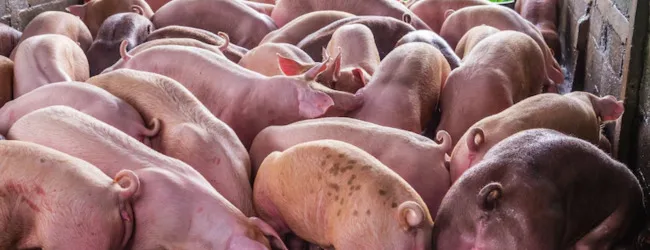
Producing healthy pigs is only half the battle; you also need to sell them effectively.
- Identify Buyers: Establish connections with potential buyers early on:
- Local butchers and meat shops
- Wholesale meat markets
- Hotels and restaurants
- Pork processing companies (like Meat Products of India Ltd. or private players)
- Direct sales to consumers (requires marketing effort)
- Other farmers (selling piglets or breeding stock)
- Determine Sale Time: Sell pigs when they reach the desired market weight (typically 80-100 kg for fatteners, achieved in 6-8 months). Selling culled sows/boars is another revenue stream.
- Pricing: Price based on live weight. Rates fluctuate based on location, demand, season, and quality. (Recent examples range from Rs 130-145 per kg live weight). Processed pork products (bacon, sausages, specific cuts) fetch significantly higher prices if you venture into value addition.
- Transportation: Arrange for safe and hygienic transportation of pigs to the market or buyer. Minimize stress during transit.
- Build Relationships: Foster good relationships with regular buyers for consistent sales.
ALSO READ | What is Dragon Fruit Farming? 7 Important Guidelines
Financial Aspects: Costs and Profitability
Understanding the financial side is critical for sustainability.
Initial Investment (Capital Costs):
- Land (if not already owned/leased)
- Construction of Pig Sheds (a major cost component)
- Purchase of Breeding Stock (costs vary by breed and quality; e.g., Sow ~Rs 13,500, Boar ~Rs 12,000 in one report)
- Equipment (feeders, waterers, handling equipment, weighing scale)
- Water and Electricity Setup
- Fencing
(Example: A Punjab study showed an average initial investment of Rs 12.64 lakh for commercial farms, with shed construction being 65% of it. A smaller 20-pig unit example estimated Rs 1.5 lakh for sheds).
Recurring Costs (Operational Costs):
- Feed: The single largest expense (can be 60-80%+ of total costs).
- Labour: Wages for farm workers.
- Veterinary Care: Medicines, vaccines, vet fees.
- Utilities: Electricity, water charges.
- Insurance: Premiums for livestock insurance.
- Maintenance: Repairs to sheds and equipment.
- Marketing & Transportation: Costs associated with selling pigs.
(Example: The Punjab study found average annual total costs of Rs 19 lakh, with feed accounting for 81%).
Potential Revenue Sources:
- Sale of Fatteners (pigs raised for meat)
- Sale of Piglets (if operating a breeding unit)
- Sale of Culled Breeding Stock (older sows/boars)
- Sale of Pig Manure (e.g., Rs 3,000 per trolley in one report)
Profitability:
- Profitability in pig farming is highly variable. It depends on:
- Management efficiency (especially feed conversion).
- Feed costs.
- Mortality rates (disease control is key).
- Market price obtained for pigs.
- Scale of operation.
- Some reports suggest potential net profit margins (e.g., 40% or Rs 0.28 earned per rupee spent), but these are estimates.
- Highlight: Detailed record-keeping of all expenses and income is essential to accurately track profitability and make informed management decisions.
ALSO READ | What is Primitive Subsistence Farming? A Comprehensive Guide
Government Schemes and Support for Pig Farming in India
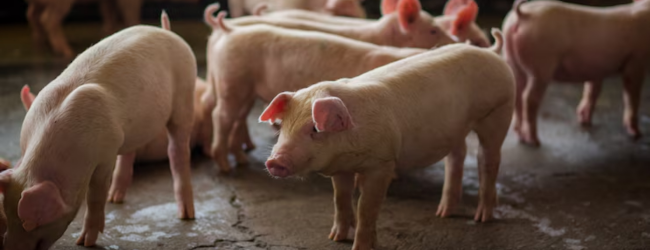
The government offers several schemes to promote livestock farming, including piggery. Leveraging these can significantly reduce the financial burden.
National Livestock Mission (NLM): This is the flagship central scheme. Key components relevant to pig farming (as of 2024-25):
- Entrepreneurship Development Programme (EDP): Provides 50% capital subsidy (up to a ceiling) for setting up breeding farms and fodder units. The subsidy is routed through SIDBI to the beneficiary’s bank/financial institution.
- Pig Breeding Farm (50 Sows + 5 Boars): Max subsidy up to Rs 15 lakh.
- Pig Breeding Farm (100 Sows + 10 Boars): Max subsidy up to Rs 30 lakh.
- Feed/Fodder Units (Silage, TMR, Block making): Max subsidy up to Rs 50 lakh.
- Eligibility: Individuals, Self Help Groups (SHGs), Farmer Producer Organizations (FPOs), Joint Liability Groups (JLGs), Section 8 Companies, Cooperatives.
- Application: Through the NLM portal (nlm.udyamimitra.in). Requires a detailed project report and bank loan sanction (or bank guarantee for self-financed projects).
- Other NLM Support: Breed improvement programs (state-level), fodder development, livestock insurance (premium subsidy), innovation & extension support.
- NABARD Schemes: NABARD supports agriculture and rural development by providing refinance to banks offering loans for activities like piggery. They also channel subsidies for government schemes like NLM.
- Department of Animal Husbandry & Dairying (DAHD): The central department overseeing livestock development, providing guidelines, and implementing schemes like free CSF vaccination under the Livestock Health and Disease Control Programme (LHDCP).
- State Government Schemes: Many states have their own specific schemes or additional incentives for piggery. Check with your State Animal Husbandry Department. (e.g., DAY-NRLM supports backyard piggery for rural women SHGs).
- Training: Government institutions like Krishi Vigyan Kendras (KVKs), State Agricultural Universities, and ICAR institutes (like the National Research Centre on Pig, Guwahati) often provide training on scientific pig farming. Private training centers also exist.
Highlight: Explore and utilize available government support to reduce your initial investment and access technical guidance.
Need Expert Guidance?
Starting a business can be challenging, but you don’t have to do it alone! At Boss Wallah, our 2,000+ business experts are ready to provide valuable insights and guidance. Whether you need help with marketing, finance, sourcing, or any other area of any business, our business experts are here to help you succeed- https://bw1.in/1116
Confused about Which Business to Start?
Want to start your own business but unsure which one to choose? Explore Boss Wallah, where you’ll find 500+ courses by successful business owners, featuring practical, step-by-step guides on starting and growing various businesses.
Find your perfect business idea today – https://bw1.in/1111
Conclusion
Starting a pig farming business in India holds considerable promise, driven by increasing demand and the inherent efficiency of pigs. However, success is not guaranteed. It demands thorough planning, informed decisions on breed selection, diligent feed management, and, most critically, unwavering commitment to strict biosecurity protocols to safeguard against devastating diseases like African Swine Fever.
Profitability hinges on efficient management, controlling input costs (especially feed), minimizing losses due to disease, and securing good market prices. By leveraging scientific practices, utilizing available government support, and dedicating consistent effort, pig farming can be a rewarding and sustainable enterprise for Indian farmers and entrepreneurs in 2025 and beyond.
Frequently Asked Questions (FAQs)
Q. Is pig farming profitable in India?
Yes, pig farming can be profitable in India, but it requires efficient management. Profitability depends heavily on factors like feed cost (the major expense), breed productivity, effective disease control (especially biosecurity against ASF), market demand, and the price obtained for pigs. Potential margins exist, but it’s not a guaranteed high-profit venture without dedication.
Q. How much land is needed to start pig farming?
The land requirement depends entirely on the scale of your operation. A small backyard unit needs minimal space, while a commercial farm requires more. Focus on providing adequate floor space per pig as recommended (e.g., 10-20 sq ft for growers/fatteners, more for breeding stock) plus space for movement, waste management, feed storage, and potential fodder plots. A sample commercial project mentioned needing about 1 acre.
Q. What is the initial investment for a small pig farm?
Investment varies widely based on scale, location, land cost (if any), and type of housing. A very small backyard unit might cost relatively little. A small commercial unit (e.g., 10-20 sows) could require several lakhs of rupees (₹5 lakh upwards), considering costs for housing, quality breeding stock, equipment, and initial feed. Larger commercial units can run into ₹15-20 lakhs or more. Government subsidies (like NLM’s 50% capital subsidy) can significantly reduce this.
Q. Which pig breed is best for Indian conditions?
There’s no single “best” breed.
- Exotic breeds (Large White Yorkshire, Landrace, Duroc) offer faster growth and are preferred for commercial farming but require good management and feed.
- Indigenous breeds (Ghungroo, Desi) are hardier, better adapted to local climates and low-input systems, and more disease-resistant but grow slower.
- Crossbreds often provide a good balance, combining exotic growth traits with indigenous adaptability. The choice depends on your farming system, management capacity, climate, and market preference.
Q. What are the major challenges in pig farming?
Key challenges include:
- High and fluctuating feed costs.
- Risk of devastating disease outbreaks, particularly African Swine Fever (ASF), which requires strict biosecurity.
- Availability of quality, disease-free breeding stock.
- Market price volatility for pork.
- Lack of organized marketing channels in some areas.
- Implementing and maintaining effective biosecurity.
- Social stigma associated with pig farming in some communities.
Q. How long does it take for a pig to reach market weight?
Under good management and feeding practices, pigs typically reach a marketable weight of 80-100 kg in about 6 to 8 months.
Q. Can I use kitchen waste to feed pigs?
Yes, but with extreme caution. Kitchen/hotel waste (swill) can be a cheap feed source, but it’s a major vector for transmitting diseases like ASF. It MUST be properly treated (boiled thoroughly at 100°C for at least 30 minutes) before feeding. Feeding untreated swill is highly risky, often illegal during outbreaks, and can endanger your entire farm and the surrounding industry. Always check local regulations.
Q. Where can I get training for pig farming in India?
Training is available from various sources:
- Krishi Vigyan Kendras (KVKs) in your district.
- State Agricultural Universities (SAUs) and Veterinary Universities.
- ICAR – National Research Centre on Pig (NRCP), Guwahati, Assam.
- State Animal Husbandry Departments.
- Some private farms and training centers also offer courses (verify their credibility).
Q. Are there government subsidies available for pig farming?
Yes, the National Livestock Mission (NLM) is the primary central scheme providing a 50% capital subsidy (up to ₹15 lakh for a 50-sow unit, up to ₹30 lakh for a 100-sow unit) for establishing pig breeding farms. Subsidies are also available for feed/fodder units. State governments may offer additional schemes. Check the NLM portal (nlm.udyamimitra.in) and your State Animal Husbandry Department website.
Q. What are the main diseases affecting pigs?
The most critical disease currently is African Swine Fever (ASF) due to its high mortality and lack of vaccine/cure. Other important diseases include Classical Swine Fever (CSF – vaccine available), Foot and Mouth Disease (FMD – vaccine available), Porcine Reproductive and Respiratory Syndrome (PRRS), Erysipelas, and various parasitic infections (internal worms, external lice/mange).


